For the Community: What I’ve Learned From Our Maker in Residence Program
Jennifer Eltringham is a Senior Librarian for Creative Services at the Pikes Peak Library District in Colorado Springs, CO.
Community members participate in Pikes Peak Library District’s 2022 Maker in Residence program.
Pikes Peak Library District, has run a Maker in Residence program since 2014, hosting over 30 makers to teach classes and create a community-based project on topics from bookbinding to stop motion animation to songwriting. The program has evolved many times over the years - each session, staff have learned new things and incorporating those lessons to streamline the experience. I took over this program in 2022, the library’s first session since the beginning of the COVID-19 pandemic. This is what our Maker in Residence program looks like currently:
We hosted two residencies for 2022, one in the spring and the fall. Each residency lasts for ten weeks. Over those ten weeks, the maker is asked to teach 30 hours of classes at a selection of our 16 locations and spend up to 30 hours creating a community-based project.
We budget $3300 per session. The maker gets paid $30 per hour for the aforementioned 60 hours of work. The remaining $1500 is used for supplies.
We have an application and interview process that I’ve revamped this year - more on that later.
Figuring out what this program looks like under my leadership has been a great joy and also one of my great professional challenges. I love seeing the project coming together. I love to see ideas and techniques “click” for patrons. I especially love to see a local maker get a paid platform to share their work, teach others, and create value for the community. I’ve also learned a lot, sometimes in difficult ways. Here are a few of my big takeaways:
My role in this project is to translate.
Patrons, especially those who use the library often, learn to expect a certain class format, teaching style, and level of difficulty. Artists and makers often have their own way of communicating and seeing the world. This year, those two interests sometimes meshed and sometimes conflicted throughout the project. I realized it is my job to let the artists know about our patrons’ expectations, as well as to encourage the artists to share context and stories to help patrons understand their point of view. I don’t just organize and schedule these classes. It is important for me to act as a connector.
Not all makers are teachers.
While we do vet for teaching experience, this can take many forms - leading craft projects for children, passing traditional knowledge on to family members, corporate training experience. Leading a class in the area of expertise that people often practice individually can be a test. When I first started this project, I thought the makers would know how to structure a class naturally. I now know it’s my job to be a little more hands-on. I’ve tried to update our application process to reflect this, and we now ask applicants to fill out a class outline template. I don’t necessarily want them to have it all figured out, but I do hope it will help me better understand where they’re starting.
Get organized and get organized quickly.
Ten weeks goes by fast. During our first session, deadlines crept up on me, communication with our library locations fell by the wayside, and issues I hadn’t considered reared their ugly heads constantly. While I think I have a much better feel for deadlines, communication rhythms, and everything that needs to get done, I wouldn’t necessarily recommend figuring these things out the hard way. Understand the moving parts as you get started. How long does it take to have a check ready for your maker? How can you or your colleagues help get the word out to make the program as successful as possible? What do you or your coworkers who are hosting classes need to know beforehand?
If you’re interested in starting or revamping a Maker in Residence program at your library, you don’t necessarily have to start with all of the resources that my library has put toward this project. There may be other ways you can incentivize makers to participate - hosting an exhibit of their work with local dignitaries, connecting them with other arts programs and resources in your area, or allowing them to use space in your library for studio work might all be ways to support your maker on a lower budget. More important, I think, are capacity and momentum. If you’re thinking about starting your own Maker in Residence program, I’d be happy to chat with you. You can either leave a comment below or email me at jeeltringham@ppld.org and we can be in touch. You can learn more about our Maker in Residence program at https://ppld.org/mir
Library Makers is a community of learners and leaders for public library maker programs. You can currently find us on Facebook. Would you like to share your knowledge, story, or project idea on this blog? Email info@librarymakers.org for more information.

